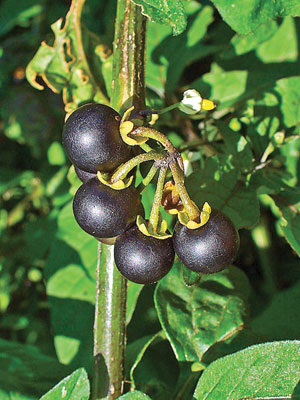The rising cost of grain and fuel affects everyone, from the farmer to the consumer. In the middle is the feed lot owner. His is in a precarious position balanced on a thin line between profit and loss. Without the benefit of pastureland, he must rely on hay and grain to grow out his calves to the 1200 lb. live weight necessary to end up with the preferred 700-800 lb. carcass weight. “The price of grain is causing the feedlot not to want to own those cattle quite so long,” stated University of Missouri Livestock Specialist, Eldon Cole. “Feed yards are looking for animals without the health maintenance requirements that calves have,” added Steve Owens of Joplin Regional Stockyards.
Many Ozark landowners and cattlemen are finding the period of growth between weaning and slaughter, known as backgrounding, a valuable industry.
Buy it or raise it?
There are two methods of backgrounding; buy and grow out, or raise and grow out. Buy and grow is the method for landowners who aren’t looking for the full time work of a cow/calf operation. “The advantage here is that you can schedule when you have cattle,” said Owens. “You have them four to six months and get a return. But it’s not for everybody. Backgrounding requires a knowledge of the land, cattle health and nutrition and having the facilities to work them.” The disadvantage is that you are purchasing them from the producer, and that’s money out of your pocket.
For the cow/calf producer, the raise and grow method adds to the daily work load but without the added cost of purchasing the calves.
Requirements for growth
According to Cole, the British breeds- Hereford, Angus and Shorthorn- are better genetically suited to backgrounding. “Black baldies are awfully good to background,” he said. “With Charolais and Simmental I would say put those calves on feed a little earlier. This helps them achieve a higher percentage of choice carcass at harvest without having a larger carcass than desired.”
Genetics play an important role in growth, but attaining that perfect 1.5 to 2 lb. per day weight gain requires good health and nutrition practices. The regimen really begins at weaning. Cole stressed that castration, shelter, vaccinations and parasite control are necessary to utilize the nutrition. Without good health the best nutrition is wasted.
“Backgrounding requires almost as good nutritional forage as dairy cattle,” Cole said. “Fescue is not the best crop to put on rapid gain.”
Recommended grasses include bermuda and caucasian bluestem, which grow best May through September, and orchard grass, as well as crabgrasses. “Regardless of what other types of grass you have, try to get some legumes such as ladina clover.” Also, by using rotational grazing backgrounders can maximize their profit potential.
Backgrounding is just as much of a gamble as any livestock operation. Animals do get sick, especially young ones, and things do happen. The question to ask is can I put weight on them for sixty-cents a pound then sell them for a dollar a pound?




